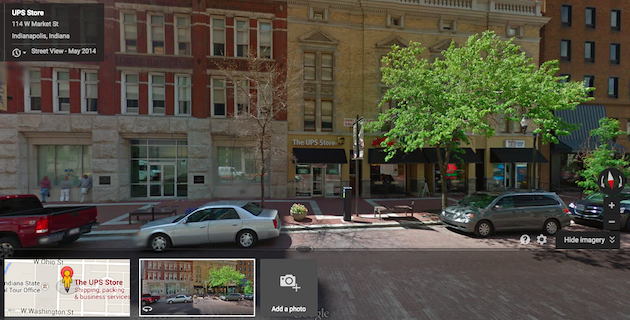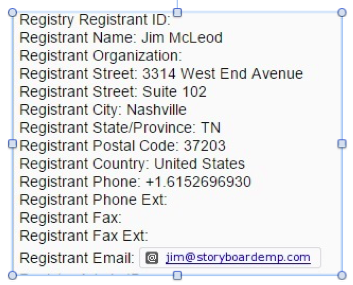Simple Online Tools to Help You Find Your Target
Every day at our collections agency, we use paid and free resources to locate business owners who have stopped communicating regarding unpaid invoices. Here are four free Internet tools that often help us in difficult situations.
Google Maps Search on Address
The old adage “a picture is worth a thousand words” often rings true when trying to understand more about the business and owners that we are pursuing. That’s why we begin many skip traces with taking a look at where the business was located and/or the owner’s reported residence.
We start with putting the business address into Google maps. Using the satellite view, we can quickly determine if the location is commercial or residential. If it’s residential, that tells us several things: One, it was a small business. Two, any employees may just have been aliases or worked remotely. Three, the address should be given priority during investigation to see if it is still valid or can provide links to the owner’s new residential address.
Next, we will switch to Google’s street view to garner more insights. If it’s a commercial location, we may get a picture of the business store front and signage. We may also see the names of adjacent businesses that we can contact. A call to these businesses often lets us know whether the target is still open, even though they aren’t answering the phone. Or we may learn the approximate date the company closed.
Occasionally, we’ll discover that they have opened in a new location with a new name. All too often, we see the sign of a UPS Store or other business that provides mailbox services. That tells us the address won’t have much value during our investigation.

If street view shows us a residential location, we’ll note whether it is a single-family residence or an apartment or condominium. Names and signatures on deliveries to a multi-family location are less likely to be directly related to our target than a single family residence is. We’ll also note the look and condition of the residential location to give us more clues about our target.
Standard Internet Search on Address
Next, we do a regular search on the business address. If we see a large number of businesses listed at a small building or store front, that is often a clue that it’s merely a mailbox service. Or, when looking at the list of business names, we’ll see the name of what appears to be a mailbox service—which we can confirm by calling.
While it’s always disappointing to learn that an address is a dead end, at least we know it’s time to stop chasing that lead and pursue other angles.
On some occasions, especially when other business names are associated with a residential address, this will give us clues for locating our target. These other businesses may be run by our target; some may still be active, and chasing these down can often yield valuable information and connections.
Secretary of State Business Searches
Every business that creates a separate entity (corporation, LLC, partnership) has to register with at least one of the 50 secretaries of state. These records are now searchable online and free for 48 states. Some offer more information than others, but they all provide at least one name and one address.
Often, we will get different name spellings, new addresses, or additional names that can be researched for connections. Occasionally, all we get is the same information we already have, but at least that confirms the validity of this existing data.
Internet Site Whois Registration
Most businesses have a website. In order to get a website domain, ownership information must be given to the registrar. Owners have the option of keeping this information private; or they may have used a service provider, which means the provider’s information is on record, instead of the actual owner’s. But, on occasion, a whois search will yield valid name and address information that can have value.
Most domain sellers include a free whois search. Since our websites are registered through GoDaddy, we use their search. A whois search for this website pursuit-magazine-staging.hxqxknxf-liquidwebsites.com reveals:
In this case, we get a name, an address, a phone number, and an email address. Whether the whois information would be helpful requires additional research.
Summary
These are just four examples of ways to use free Internet resources during the skip tracing process. We often use the information from these free services in conjunction with paid resources.
Currently, the paid resource we use most often is TLOxp. These paid resources allow us to drill down further on the clues we picked up from the Internet and help us close in on the people we are seeking.
About the Author:
Dean Kaplan is president of The Kaplan Group, a consulting firm and commercial collection agency specializing in large claims. He has an MBA from the University of Chicago and a 30-year career as a CFO, consultant, entrepreneur and negotiator. He has closed over $500 million in M&A transactions while traveling to over 40 countries.



